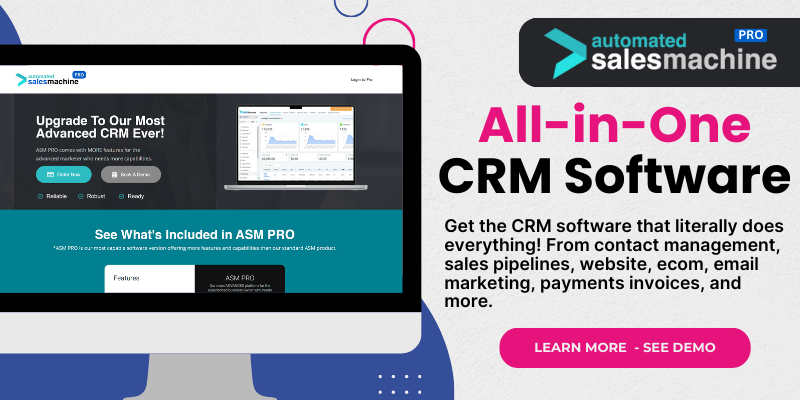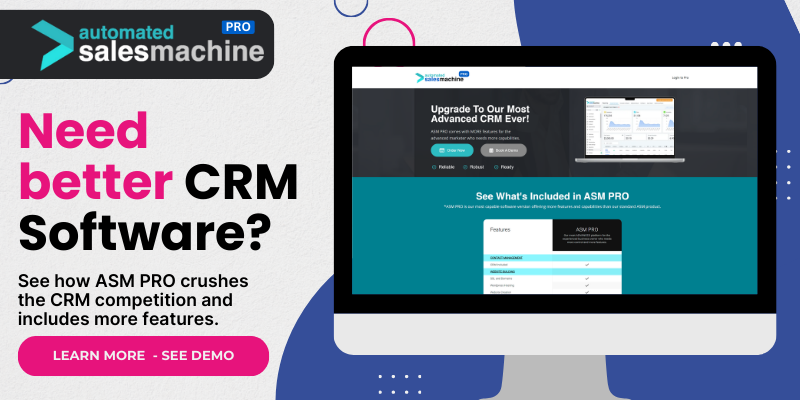Understanding Automated Emails in Zoho CRM
What Are Automated Emails?
I’ve been in the marketing game long enough to know that automating processes can be a game changer. Automated emails, in the context of Zoho, are emails that get sent out automatically, triggered by specific actions like creating a lead. This not only saves you time but also keeps your leads engaged right off the bat.
This tool helps in nurturing leads without you having to lift a finger every time someone shows interest in your services or products. It’s like having a tireless assistant who works 24/7. All you need to do is set it up once and let it do its magic!
With automated emails, the key is personalization. You want your message to feel personal and direct, even though it’s being sent out automatically. This makes a tremendous difference in the recipient’s experience.
Why Use Automated Emails?
From my experience, the biggest value comes from the consistency it brings to your marketing efforts. When a lead is created in Zoho CRM, they get an immediate email that acknowledges their interest. This immediate acknowledgment can greatly enhance customer satisfaction and encourages them to engage further.
Moreover, it helps in reducing any manual errors that might happen if you were to send emails yourself. We all have busy days, and sometimes those emails can fall through the cracks. Automated systems ensure that’s simply not going to happen.
Finally, it provides valuable insights. With tracking functionalities available, you can view open rates and actions taken by leads which will help you tailor further communications more effectively.
Getting Started with Automated Emails
Now that we’ve established why automated emails are beneficial, let’s get into the nitty-gritty of setting them up. You’ll want to grab your device and have your Zoho CRM account handy. It’s a straightforward process. If I can tackle it, so can you!
The first crucial step you’ll need to take is determining the objective of your automated email—are you welcoming leads, providing them information, or pushing them toward a sale? Having a clear objective in mind will guide the content of your emails.
Dive into Zoho CRM, and you’ll find the automation section waiting for you. That’s where the action happens! Setting up templates and triggering criteria is like laying the foundational bricks of an intricate house of marketing automation.
Creating Email Templates
Getting Your Template Ready
Templates are your go-to tool in making sure your communications stay consistent. Since you want to maintain a particular tone and message flow, creating a solid template right off the bat is crucial. Don’t worry; it doesn’t have to be fancy—clear and straightforward is often the best route!
I suggest starting with a captivating subject line. Something that hooks the recipient and makes them eager to open the email. From there, use a friendly yet professional tone in the body. Share what they can expect after contacting you, highlight any helpful resources, or even offer a special introductory deal if that suits your business model.
Once you craft that first email template, test it out! Send it to your personal email or to a friend. Gather feedback and tweak it as necessary to ensure it resonates well.
Personalizing Your Emails
Next up is personalization. This step can make or break the effectiveness of your email. Use tokens that pull information directly from the lead’s data—like their name or company name. There’s something special about seeing your name in an email; it feels more personal, right? That’s the kind of touch that can lead to better engagement rates.
You can also tailor the content to cater to the specific interests the lead has expressed—if they showed particular interest in a product or service, mention that specifically in your email. Show them you’ve paid attention to their needs; it establishes rapport.
Remember, the idea here is to build a relationship and make your leads feel valued. When they feel like they’re more than just a number in a database, they’re more likely to stick around and convert into customers!
Testing Your Templates
Before going live with your automated emails, you’ve got to run a few tests. Make sure everything works just as you planned. Send sample emails to yourself or your team to see how they arrive, if the dynamic elements fill in correctly, and are links functioning as they should?
Sometimes things don’t show up exactly as we envision when looking at them from the design side. I always say, “trust but verify!” Taking the time for testing can save you from embarrassment or potential loss of leads later on.
After multiple tests, make any necessary adjustments until you’re satisfied. Once everything looks good to go, you’re all set to activate those automated emails!
Setting Up Triggers for Automated Emails
Understanding Triggers
Triggers are essentially the steak and potatoes of your automated emails—they initiate the email you’ve crafted to be sent out. In Zoho CRM, you can set various triggers based on specific actions, particularly when a new lead is created.
You can get as detailed as you’d like—set triggers for certain lead scores or based on the source from which the lead came. The more tailored your triggers, the finer your strategy will be!
This part might feel overwhelming at first, but take it word for word. Start with a basic trigger to get your feet wet, then gradually add complexity as you grow more comfortable with the process.
Choosing the Right Trigger Type
There are various types of triggers you could consider. For newly created leads, you’ll likely want to set a basic trigger. However, you could choose other triggers based on behavior—like when a lead clicks on a link in an email, which can prompt a follow-up email.
This is where having clear objectives comes back into play; the better you define what you want to achieve, the easier it will be to choose the right kind of trigger. Basically, keep your goals front of mind, and let them guide your decisions here!
It’s all about making that email reach the right inbox at the right time. Targeted communication changes the game completely.
Activating Your Triggers
After setting up and customizing your triggers, it’s go time! Activating them is usually a straightforward “On” button in Zoho. Make sure the triggers are set and ready to roll, and double-check your work here—this is the moment you’ve been leading to!
I’ve had instances where I thought I activated everything only to find out later I missed a step. I can’t emphasize enough how vital it is to carefully review your settings before hitting the launch button.
Once you activate your triggers, congrats! You’ve successfully established automated emails for new leads. How cool is that?! Enjoy the knowledge that your marketing efforts are operating smoothly, even while you take a breather. Just sit back and watch as those emails do their thing!
Monitoring and Analyzing Performance
Reviewing Email Analytics
Okay, so you’ve hit that magical “Activate” button. What’s next? Monitoring and analyzing how your emails perform! This is the fun part. Zoho CRM provides you with comprehensive analytics to see your open rates, click-through rates, and overall engagement metrics.
By keeping an eye on these metrics, you’ll get a real sense of what’s resonating with your leads and what might need a little polishing. Was your welcoming email well-received? Did people open it and click through? The data will tell you!
Don’t just set it and forget it; actively look into how those emails are being received. It’s a fantastic way to refine your future communications.
Iterating Based on Feedback
As you dive into the analytics, make notes on any patterns that stand out—maybe certain subject lines perform better, or specific times yield higher open rates. It’s all about taking a proactive approach when it comes to your email strategies.
Collect feedback from your sales team as well; they might gather different insights on lead responses that can help you tweak your email approaches.
Taking the time to iterate based on this feedback can lead to powerhouse email campaigns that truly resonate with your audience! Continuous improvement is the name of the game!
Keeping Your Strategy Fresh
Finally, never let your emails grow stale. As your business evolves, so should your automated emails. Make it a point to revisit your email templates and triggers regularly—even seasonal updates can add a fresh touch. If your business is pushing a new product or campaign, reflect that in your emails.
By keeping your email content dynamic, you’ll not only engage your existing leads but also entice new ones to join in. This means being adaptable and staying ahead of trends within your industry.
Regular updates and fresh ideas can turn an excellent automated email strategy into a fantastic asset that builds strong relationships with your leads!
Conclusion
Setting up automated emails when a lead is created in Zoho CRM might seem daunting, but it doesn’t have to be. Just take it step by step, keep your audience at the heart of every decision, and watch as your efforts pay off. You’ll be able to focus more on other essential tasks in your business life while trusting that those newly created leads are being nurtured effectively.
Embrace the strategy, engage with your leads, and let those automated emails work their charm!
Frequently Asked Questions
1. What is the main benefit of using automated emails?
The main benefit is saving time and ensuring consistent communication with leads. Automated emails keep your leads engaged and provide timely responses without adding extra tasks to your daily routine.
2. How can I personalize my automated emails?
You can personalize your emails by using dynamic fields like the lead’s name or company name and tailoring content based on their expressed interests. This makes the communication feel more personal and relevant.
3. What should I include in my email template?
Your email template should include a catchy subject line, a clear and friendly message, and any relevant resources or special offers. The goal is to provide value while encouraging leads to take the next step.
4. How often should I monitor my email analytics?
It’s good to monitor your email analytics regularly, perhaps weekly or monthly, depending on your email frequency. This helps you understand performance and adjust your strategies where needed.
5. What if my automated email results are disappointing?
Don’t be discouraged! Analyze the data, seek feedback, and iterate on your strategy. Testing different subject lines, sending times, or content tweaks can help you improve open and engagement rates over time.

